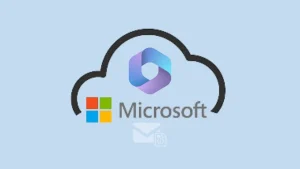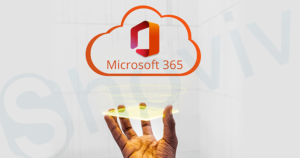Shoviv Exchange Recovery Manager not only helps to recover your Exchange environment but carry additional tasks too. With this tool you can migrate Exchange to Office 365, repair broken EDB files & restore them and add Exchange and Office 365 as a source. One can also migrate/ upgrade to Exchange and Office 365 via this software. Restoration of EDB may be carried by picking single files or even the entire mailbox.
Migrate Exchange to Office 365 and do much more with Exchange Recovery Manager
The Exchange Recovery Manager gets your Exchange environment back on track quite literally. It can migrate Exchange to Office 365 import/ export entire mailboxes or selected email items from corrupt EDB files and Live Exchange Server. It is a complete backup solution that facilitates easy search and import/ export of data. This is the easiest and most reliable way to recover inaccessible and corrupt EDB files and to restore them. With this tool, you can also export added source, EDB files, and source mailbox to Outlook PST, Exchange Server, Office 365, and Outlook profile stores. The public EDB files and single mailboxes too can be exported to Live Exchange, Office 365, etc. Not only these, but the client also gets a lot of variety in the output format too. The source mailboxes can export to MSG, HTML, RTF, EML, etc.
Save your valuable time with the best ever features of Exchange Recovery Manager
Clients who use the Exchange Recovery Manager to migrate Exchange to Office 365 and for other tasks can’t help but profess wonder over its awesome features. Below we elaborate on the most relevant features of this tool.
Fast recovery of added Exchange EDB files
This tool not only can migrate Exchange to Office 365, rescue EDB files but also save time while doing so. The public as well as private EDB files can be rescued with this tool and restored in record time. It can restore EDB files, folder hierarchy, emails, contacts, calendars, etc without hassles. Once this task is managed, it can also migrate Exchange to Office 365 in the smoothest manner possible. The best part is that unlike other tools, it does not alter the contents of the files.
Capable of adding Office 365 and Live Exchange mailboxes as a source
With this software, you can add Exchange server mailboxes through the Active Directory (AD). Having full admin rights lets the users access other mailboxes as well. With this tool you can migrate Exchange to Office 365, migrate or export added mailboxes to another target mailboxes. The target mailboxes may vary anywhere from Live Exchange to Office 365. They can be exported to PST.
Adds public folder, archive mailbox, and Outlook profile
Using this feature one can add Office 365, Exchange Public folder to another Live Exchange/ Office 365 Public folder, and Archive mailbox. The Outlook Stores can migrate to Live Exchange, PST, and Office 365 while keeping the folder hierarchy intact. The user-friendly GUI lets the users execute the task without technical glitches.
Preview source items before the final step
You would not have to tussle with technicalities if you want to preview your items before you migrate Exchange to Office 365. With this facility, you can easily cross-check the content of the files with the MAPI tag. The preview action lets you be reassured about the accuracy and integrity of the product.
Exports in Live Exchange, Office 365, and Outlook profiles
Once the source mailboxes have been added they can be exported to Live Exchange, Office 365, and Outlook profiles. In fact, one can also migrate Exchange to Office 365 without having to know the technical steps involved. This feature allows the users to migrate specific data range items and select message class. This is achieved through manual and automatic mapping from the source mailbox to the target mailbox. The mailbox integrity remains intact while one exports added mailbox to the target mailbox.
Converts EDB to the popular PST format
The EDB to PST converter feature lets the users extract and convert select mailboxes to new and existing PST files. All the mailboxes can be restored from corrupt EDB files. This feature is also relevant to import/export mailbox items and transfer mails, contacts, calendars, and other items. It can be carried among any Live Exchange Server, Outlook Profile, and Office 365.
Lets you split PST files
Once the steps involved in to migrate Exchange to Office 365 have been dealt with, you can split the PST files into multiple numbers. As per your requirement, you can convert the PST files into as many numbers files as you want. The tool is to create a single PST file for a single mailbox.
Restores EDB files and carries Exchange migration
As mentioned before, this tool can restore damaged files instantly. It can also migrate Exchange to Office 365 conveniently. This is done with the mapping facility which copies data from a source mailbox to the target mailbox.
Items search and filter option
In the task, you can easily even search and filter items. The auto search option speeds up the process of data search. You can search out files instantly with criteria like reading/ unread messages, attachment name, subject, CC, BCC, To, From, etc. Multivalue search can also be carried using a semicolon to separate the subjects.
Saves files in various formats
This tool provides you with many conveniences, the major among which is the facility to auto-migrate Exchange to Office 365 and to save source mailbox items into the format of the user’s choice. The source mailbox items may be migrated to MSG UNICODE, EML, vCAL, vCard, etc. Also, the files may be converted in bulk fashion, meaning faster conversion.
Saves files in HTML format
If you want to access your source mailbox files faster, you may choose the HTML format. You can choose a format when saving the source mailbox.
With all these features you would also get 24*7 free technical support. So contact us for more information via Live Chat or Email.
The link to the download is given below.
- How to Backup and Restore Emails in Webmail? - March 25, 2025
- How to Migrate Outlook to New Computer? - February 15, 2025
- Fix If Outlook Cannot Display the Specific Folder Location - February 1, 2025



